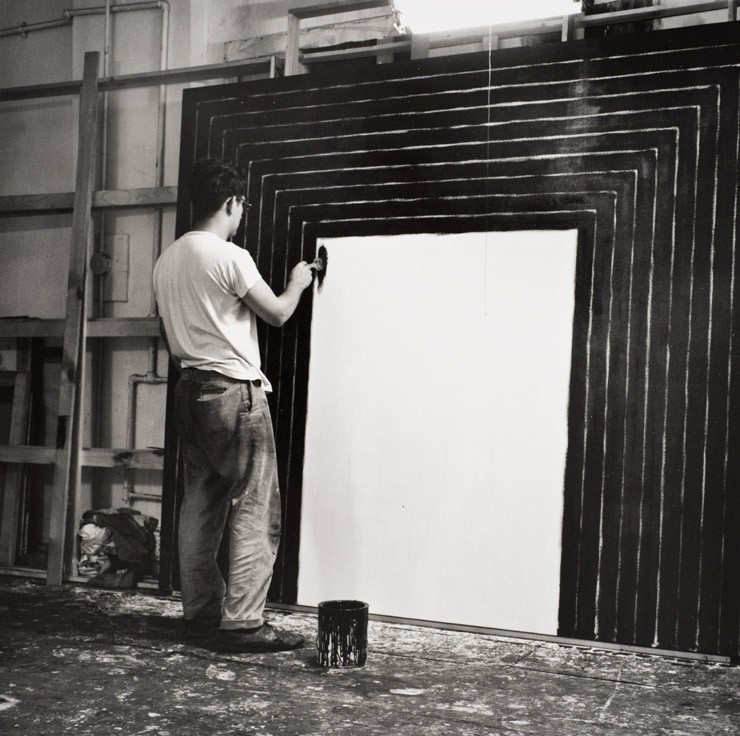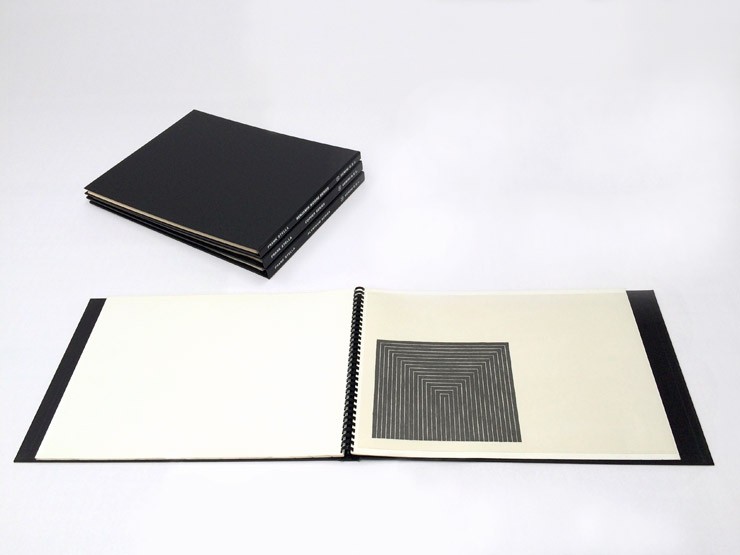The Black Series I prints closely relate to large, monochromatic canvases known as the Black Paintings, which Frank Stella (American, born 1936) completed between 1958 and 1960. Each lithograph features a pattern of rectilinear stripes of uniform width printed in metallic black ink on buff-tinted paper. In the Black Paintings, the stripes extend to the edge of the canvas support; in the prints, Stella positioned the striped form in the lower left quadrant of the sheet. This format visually unifies the series, and subtly shifts focus from the symmetrical patterning to the asymmetrical relationship between striped field and rectangular paper.
In 1964, Stella famously declared of his paintings: “What you see is what you see.” By championing purely formal concerns, he was ostensibly reacting against the rhetoric of subjectivity and romanticism surrounding abstract expressionism. But the shimmer of the metallic ink in the Black Series prints, the subtle unevenness of their stripes (drafted freehand on the lithographic plate), and the spatial ambiguity of the patterning produces an optical ambiguity that gives rise, as Stella conceded, “to emotional ambiguities.” The inky blackness inflects an eerie mood that is underscored by the prints’ evocative titles (he called them “downbeat”), which include references to Nazi slogans, Brooklyn slum neighborhoods, and New York nightclubs.


















